
Cone Temperature Conversion Chart Temperature conversion chart, Temperature chart, Conversion
Cone 06 fires at a much lower temperature compared to cone 6, and the same applies to cone 05 as well. For cone 05, the firing temperature is 1870 degrees Fahrenheit, while the firing temperature for cone 06 is 1798 degrees Fahrenheit. In the pottery world, the placement of "0" ahead of a number represents "minus.".

cone chart Temperature chart, Cones, Cone
Cone 6 temperatures. Kiln firing at cone 6 temps is considered a "mid" firing range. The "mid" firing range is the most common range for potters to do a final glaze firing. A potter's finished pieces will be fired in this range. Kiln cone 6 ranges in Fahrenheit.

What is Cone? Cone, Temperature chart, Chart
Mid-Range Pottery is fired at intermediate temperatures, typically between 2,100°F and 2,300°F Cone 5-6 (1,150°C to 1,260°C). It is frequently used with stoneware clay bodies, which are less porous and more durable than earthenware clay bodies. Because of its adaptability and consistency, mid-range firing is the choice of many contemporary.

Understanding Cone 6 Sue McLeod Ceramics
A cone is how we gauge the temperature that we are firing to. There are many different cone levels which all result in different temperatures that your Kiln will fire to. To start though lets mainly just focus on cone <06 and <6. There are different holds and firing schedules that you can set your kiln to, which in results into different per.
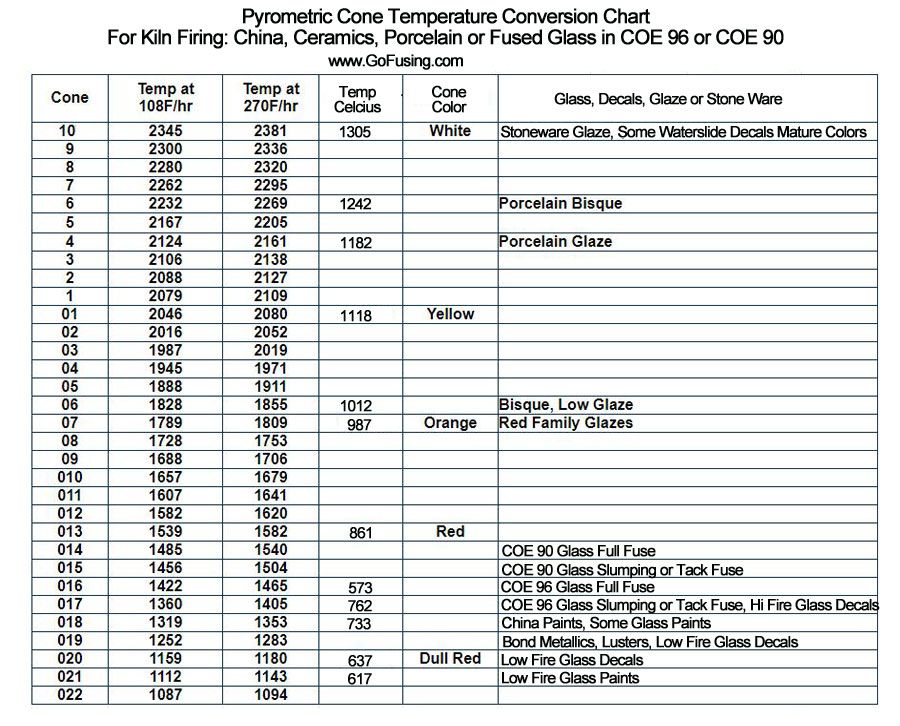
How to Convert a Cone to Fahrenheit or Celsius Temperatures
Cone 5 Also called "middle temperature" by potters, cone 5 (~2160F/1180C) refers to the low end of the temperature range at which most hobby and pottery stonewares and porcelains are fired. Recipes: G2934Y - Cone 6 Magnesia Matte Low LOI Version The same chemistry as the widely used G2934 but the MgO is sourced from a frit and talc instead of.
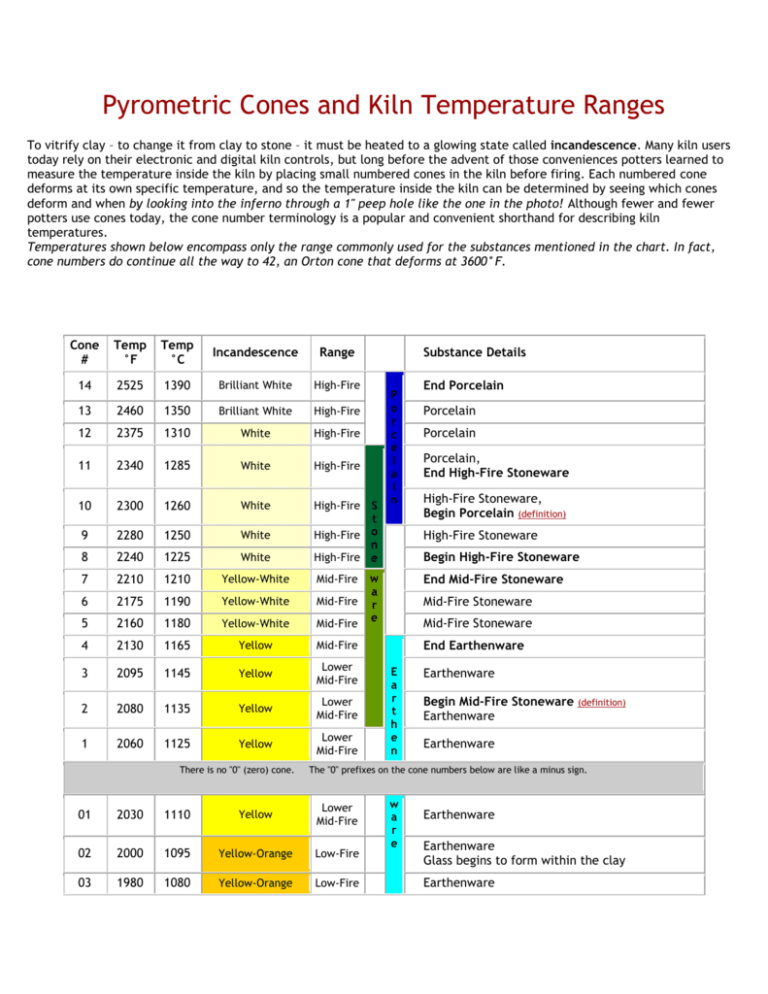
Pyrometric Cones and Kiln Temperature Ranges To vitrify clay to
cone 06-04 and cone 4-6. Note: the word cone is often replaced with this symbol Overglaze enamels. Lusters (metallics and irridescents) All cones mature with time and temperature All temperature equivalents on this chart are based on a 270° F (150° C) per hour rate climb using the large cone. Rates of climb change per firing as do temperature
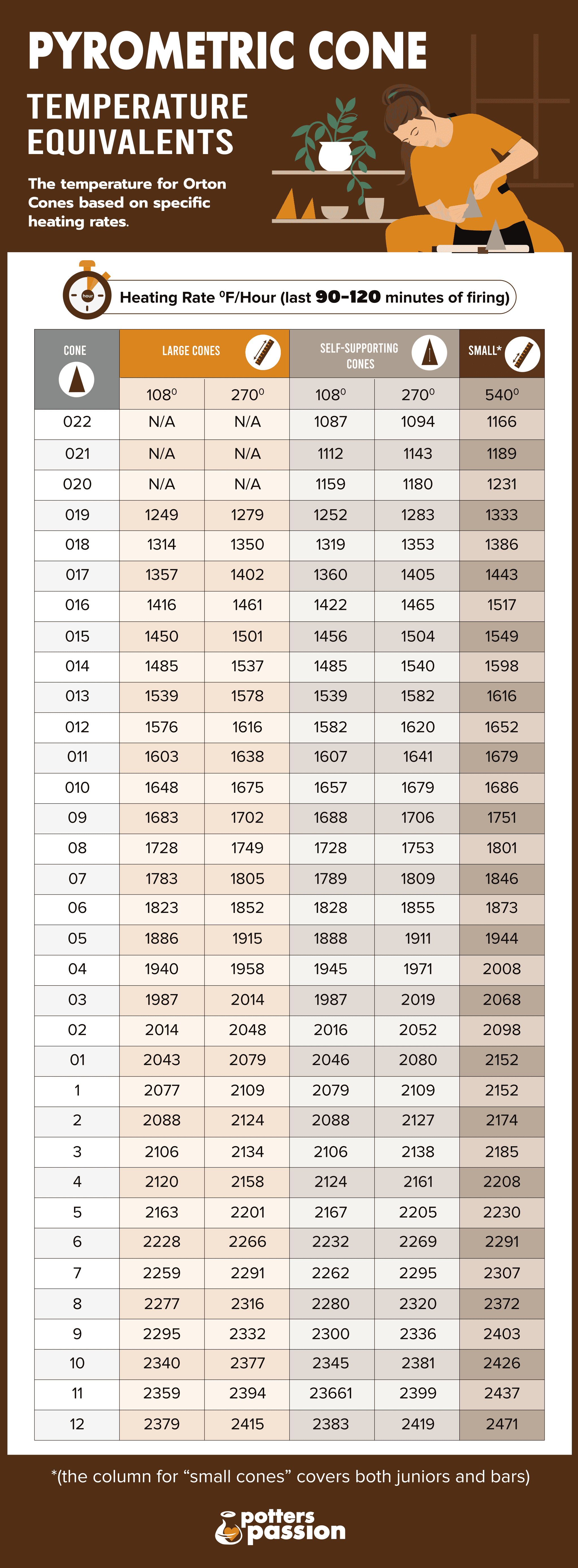
Pyrometric Cone Chart for Kiln Firing
I fire my cone 6 glazes to cone 7 using a programmable controller with the following heating and cooling cycle: 1st segment - 50°F/hour to 220°F. 2nd segment - 250°F/hour to 2167°F. 3rd segment - 150°F/hour to 1500°F. I have found that this provides a better melt and allows a good mingling of the many layers of glaze.

Understanding Cone 6 NCECA Presentation 2018 Sue McLeod Ceramics
Note that cone 01 and cone 1 are not the same. On the cone scale, the 0 in front of a number is thought of as a negative sign. So cone 6 is a higher temperature than cone 5. However, cone 06 is a lower temperature than cone 05. What cone is bisque firing? Bisque firing is normally performed between cone 08 and cone 05.
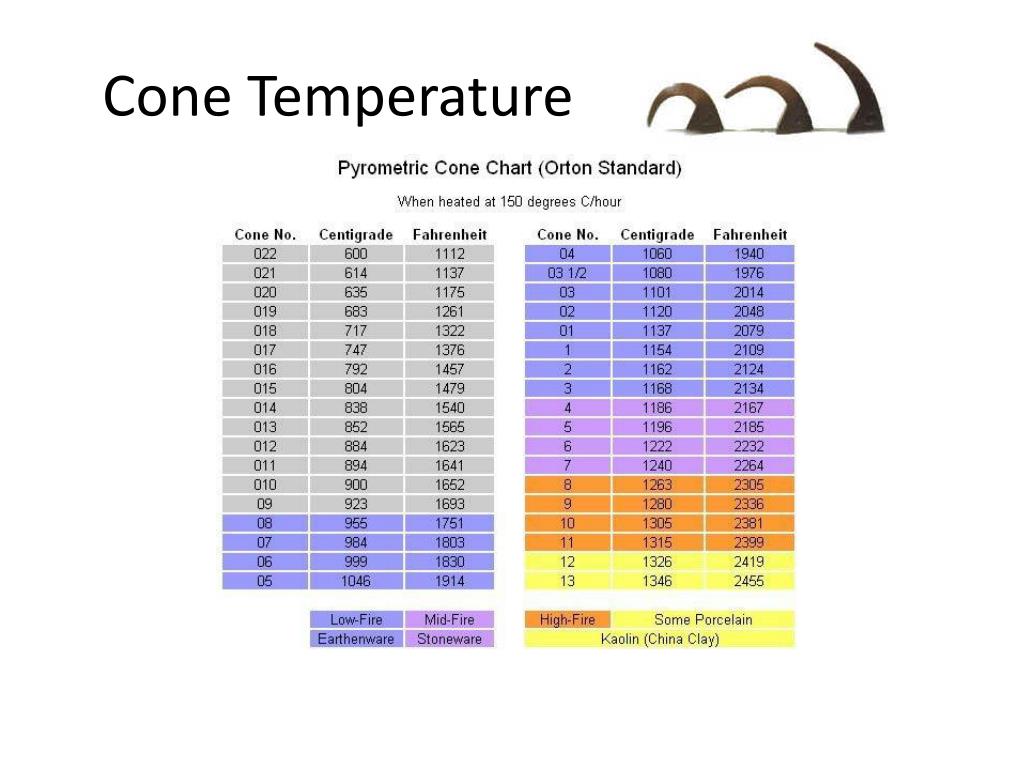
PPT Stages of Clay PowerPoint Presentation, free download ID2278112
What does cone 6 kiln fire to? How many degrees is cone 04 or cone 10? Calculator converts cone to its firing temperature in fahrenheit or celsius, and based on the heating rate of the kiln.. Calculate kiln cone temperature for cone 022 to cone 10, based on the kiln's heating rate. Cone Size: Temperature Unit: Use the Cone Comparison.

What is a Cone? A Guide to Pyrometric Cones and Kilns Pottery kiln, Kiln, Ceramics ideas pottery
Generate cone temperature chart and see the conversion between kiln cones in Fahrenheit and Celsius based on selected heat rate increase. Hourly Heat Change: -Select - 27°F (15°C) - slow 108°F (60°C) - medium 270°F (150°C) - fast
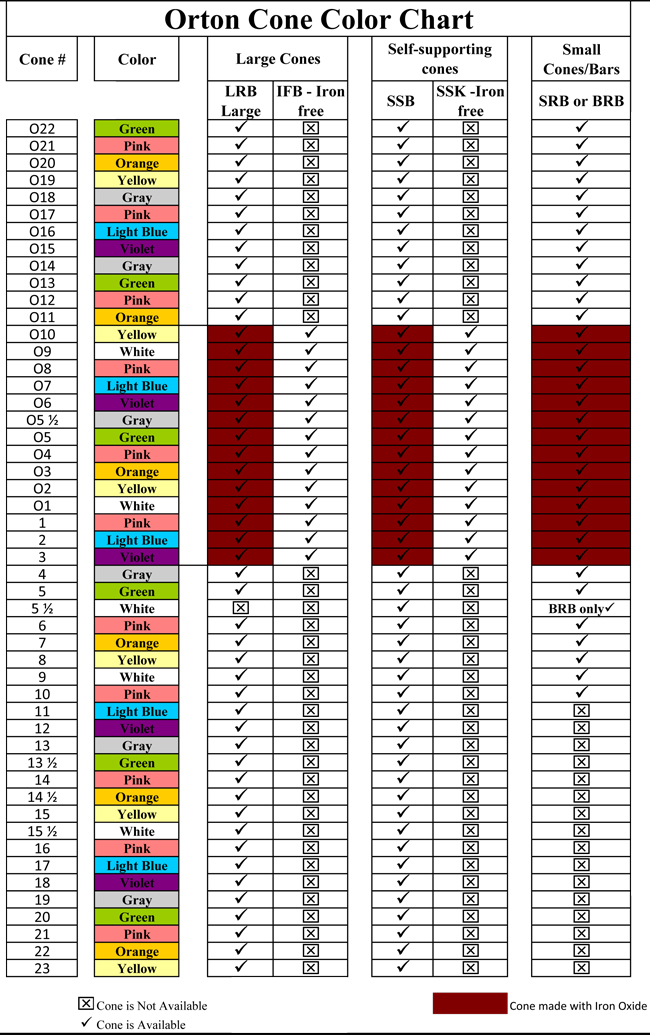
Orton Cone Chart Cone Temperature Chart
NUMBER: 022 TO 011 - Used in firing of overglaze decorations, lusters, enamels, and decals and for glass fusing, slumping, and decorating. The temperature equivalent range is approximately 1050 - 1550F (560 to 850C). NUMBER: 010 TO 3 - Made as a regular series (red, iron-containing cones) and as an Iron Free series for use in reducing atmospheres.

Kiln, Cone, Temperatures
This is cone 6 on the cone temperature chart. You should use the cones 5, 6, and 7 positioned in a row. The easiest way to position them in a row is to press them into a small sausage of clay. I have a guide on how to make cone packs here. When the kiln is firing, cone 5 will be the first to bend, as it melts at the lower temperature of 2158F.

Pyrometric Cone Temperature Conversion Chart Pottery kiln, Ceramic glaze
Pyrometric Cone Chart. Please note that the Cone Chart gives 3 different temperatures for each cone number. As discussed above, the equivalent cone temperature depends upon how fast one gets to it. Generally speaking, the temperatures in the 108°F/Hour column are used when discussing ceramics, porcelain and china.

8 Ceramic Cone Temperature Chart 2k24
Definition. The pyrometric cone is "A pyramid with a triangular base and of a defined shape and size; the "cone" is shaped from a carefully proportioned and uniformly mixed batch of ceramic materials so that when it is heated under stated conditions, it will bend due to softening, the tip of the cone becoming level with the base at a definitive temperature.
Cone 6 Glaze Recipes Electric Kilns
This temperature range is slightly lower than cone 6 and is considered a mid-range firing temperature for ceramics. Advantages of Cone 5 Firing. Lower Energy Consumption: Since cone 5 firing occurs at a slightly lower temperature than cone 6, it generally consumes less energy, potentially resulting in cost savings for the artist or studio.
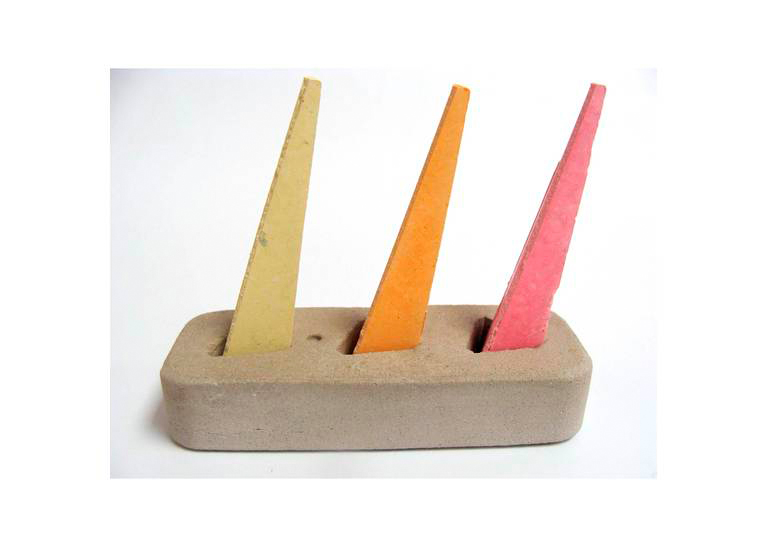
Potclays, Manufacturer of clays, glazes and kilns Standard Cone 06
The average firing temperature for high-fire stoneware is 2381℉ (1305℃). However, anywhere from 2305℉ to 2336℉ (1263℃ to 1326℃) may be appropriate depending on the specific clay used and desired effect. Cone range. Between the range of Cone 8 and Cone 12, high-fire stoneware will mature. Cone 10 is the average for this clay body.